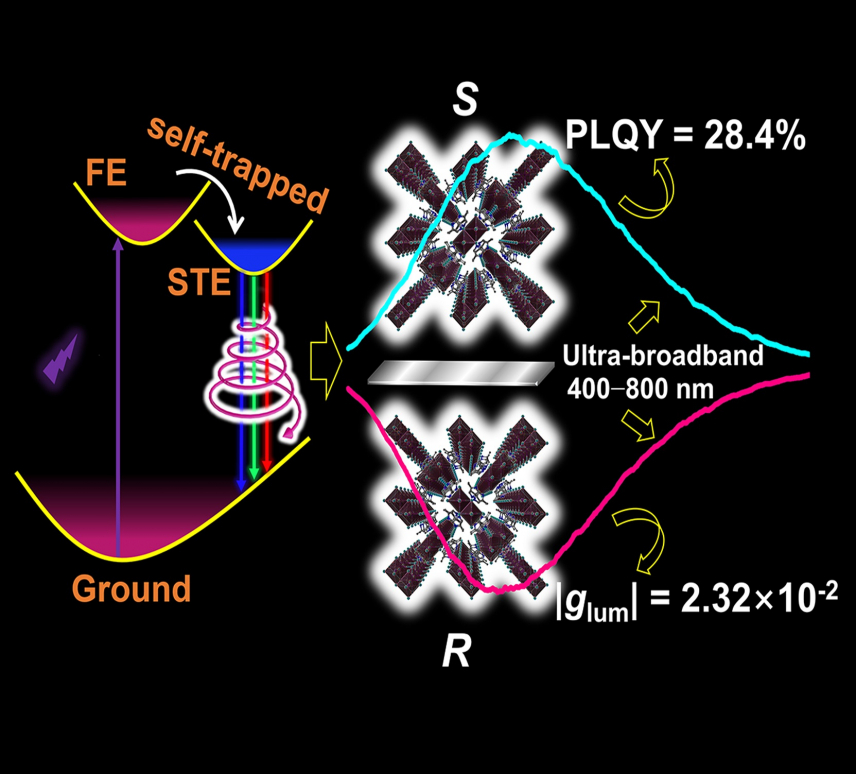An international collaboration among Southeast University, Nanjing University (China), Donostia International Physics Center (Spain), CNR-SPIN through Alessandro Stroppa and other institutions, focused on Single-Component White Circularly Polarized Luminescence in Chiral 1D Perovskites with a study just published in Advanced Optical Materials.
Chiral low-dimensional metal halide perovskite (LDMHPs), as a new generation of semiconductor materials, has shown extraordinary application potential in the field of chiral optoelectronics. The combination of the self-trapped exciton (STE) emission and the intrinsic chirality plays a key role in the excellent luminescence performance of the polarization-sensitive LDMHPs. A single-component white circular polarized light (WCPL) emitter is realized by assembling a chiral 1D double-chain perovskite with both high quantum yield of 28.4% and large photoluminescence asymmetry factor |glum| of 2.32×10−2.
The recently synthesized chiral 1D double-chain perovskite ((R,R/S,S-DMPZ)PbBr4 (DMPZ = cis-2,5-dimethylpiperazine divalent cation) was studied in details. The white light emission originated from the STE emission state which is attributed to the edge-shared inorganic skeleton consisting of a 1D double-stranded structure and shorter Pb-Pb distances. The Bethe-Salpeter equation was solved for studying the excitonic properties in terms of wave functions analysis and its visualization in real space. The study provides applicable strategies to explore single-component white CPL emitters.


